In recent presentations about green cities and green urbanism I often play for audiences several common natural sounds, to see whether they recognize what they are hearing. Here is one of the sounds I often play—something commonly heard in communities in the eastern US.
Click here for a mystery nature sound. Do you recognize this? A little later in the post I will tell you what it is, and you may be surprised.
The fact that so many fail to recognize these sorts of common nature sounds suggests something about our disconnect from the aural realm, perhaps the fact that we have lost the skill or desire to carefully listen to the world around us.
The subject of sound needs to be more squarely on the agenda of urbanists. We have tended in the urban planning and design fields, in which I teach, to privilege the visual, to celebrate the ocular. Unfortunately, this often results in lesser attention given to the other sensory experiences that make up our lives. I have become especially concerned with sound, and its persistent under-recognition as a key factor in quality of life and in overall human health and happiness.
Much of what makes me happy and content involves the things I hear, and much of that has to do with the rich and complex sounds of the natural world. Biophilia, and biophilic urbanism, are in essential ways multi-sensory, and sound is a key dimension. A natural soundscape is an essential aspect of livability and quality of life, I believe. Hearing these beautiful sounds makes us happier, as does seeing and experiencing the animals and nature that produce the sounds. However, we have left the management and stewardship of urban soundscapes to chance. It is time for cities to assume some badly-needed sonic leadership, and as the discussion below suggests there are in fact many things that cities can do.
The biophilic soundscape of cities
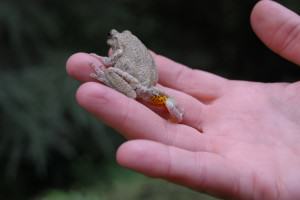
There are many natural sounds that I look forward to everyday and some I count on to mark the seasons of my life. I look forward to hearing the spring sounds of peepers, for instance, and to the glorious and cacaphonous sounds of birds. The summers along the eastern US present perhaps my favorite aural season, with evenings full of lulling katydids, crickets and tree frogs, among others, inextricably linked in my own DNA with humid and hot lazy summer evenings.
Click here for a sample of nighttime sounds in Virginia in late summer.
There is no end to the diversity and complexity of the natural sounds around us, it seems. Bird songs are a mainstay, of course, and winter finds literally hundreds of robins cackling and chirping at daybreak outside my central Virginia door. And there is the tap of the pileated woodpecker, more like a wood sculptor skillfully swinging a mallet than digging for grubs. But there are natural sounds of many kinds, from voles to bending trees and wind-rustled leaves, even to the sounds of eastern woodland snails eating, if we listen closely and carefully (as Elisabeth Tova Bailey so eloquently tells us in her beautiful book on this topic, The Sound of a Wild Snail Eating; and no wonder, as they have some 2640 teeth! You can hear a small snippit of the snail eating at Bailey’s website here.
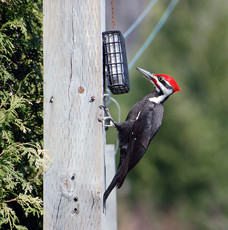
Few scholars of sound are more accomplished than Bernie Krause, who has been collecting and analyzing natural soundscapes around the world, and what their changes tell us about ecology and biodiversity (most especially in his recent book The Great Animal Orchestra). Krause distinguishes between geophonies (running water, moving trees, the rumble of moving glaciers) and biophonies (sounds emanating from living organisms), painting a picture of soundscapes of incredible diversity and complexity. From blue whales to ants to corn growing, Krause argues all life is sound-generating, and moreover we have co-evolved with these sounds and connect with them and enjoy them in important ways. “It is likely that buried deep within the human limbic brain is ancient wiring that springs to life every time we reconnect with these delicate webs of acoustic finery…” (Krause, 2012, p.105).
Listening to these deeply nourishing sounds—what Rachel Carson has called “nature’s music”—serves to calm me, steadies me, reassures me that I am in the right place, and causes me to remember family and childhood in a deep and visceral way that few other sensory experiences can. Indeed I would argue that biophilia is very much a multisensory experience, by definition, delivering much of the therapeutic power and punch that nature provides us. Natural sounds are an important entre into the mystery of life around us, a kind of aural portal or window into the complexity and diversity around us. In an age where so many things seem to be known or knowable, there are many sounds that essentially convey a mystery and wildness that we lack in other dimensions of life.
I think we need to do a better job celebrating the soundscape, cherishing those special sounds in our lives, and protecting the natural soundscapes that exist, as well as referencing these valuable benefits when we work to protect and restore natural spaces in urban settings.
How do we know that natural sounds are beneficial? We have considerable anecdotal evidence, of course. There is the interesting example of the Southern California city of Lancaster, where, through the leadership of the city’s mayor, R. Rex Parris, a network of 70 speakers plays bird sounds along a major boulevard. The mayor claims that minor crimes have gone down as a result. “Everybody is now is a better mood, a better place,” Parris told the Wall Street Journal. The positive calming effects are believable to this author, though one wonders about the merits of artificial broadcasting when the goal should be to protect and foster a healthy natural soundscape (and sufficient urban habitats to ensure real bird sounds).
Studying the natural sounds of cities is an increasingly important dimension of urban ecology, as recent studies have shown. It is interesting that the non-human inhabitants of cities seem to find ways to adapt to urban noise, perhaps more cleverly than we have. Recent studies have shown how background noise can disrupt grasshopper mating calls in cities, for instance, but also how these species adjust the frequency of their calls in response (BBC Nature, 2012) [To listen to calls of the male bow-winged grasshopper visit here. Similarly, birds such as sparrows have also been shown to modify their songs in response to noisy urban traffic (e.g. Science Daily, 2012).
What can cities do? Manage noise to foster nature-connections
Not all urban sounds are pleasant of course; many are not. Modern society is full of ubiquitous mechanical and engine sounds—cars and airplanes in particular—that seem ever-present and serve to destroy and drown out the sounds of nature. We rightly worry about the health implications and negative impacts of high-decibel sounds on hearing, but often tend to overlook the lost positive values and life-enhancing value of hearing nature and natural sounds. Controlling these mostly negative elements of our collective soundscape is a major challenge for us.
Many of these sounds—the noise—are indicative of patterns of unsustainable living and consumption. The fall season along the eastern U.S. brings many sounds that represent energy consumption and air pollution—one thinks notably of the ubiquitous presence of leaf blowers: two stroke engines that bellow so loud that conversation even indoors becomes difficult, and supplant human labor and care with air polluting, fossil-fuel-burning force. There is an irony that in a time when many Americans would benefit from greater physical activity (i.e. raking leaves) the leaf-blower emerges as an affordable technology, and one that further disconnects us (think of the ear-protection users wear) from outdoor nature, and from other humans as well.
More aggressively controlling the noises from cars is another important step. The European Union has adopted and will be phasing in overtime new auto tire standards that will significantly reduce tire noise, and this is a good step. The shift of slowing traffic in many urban neighborhoods (or eliminating car access altogether) is further supported by the benefits of being better able to hear the natural sounds there. Car-free urban districts, more common in European cities, are one way to protect and celebrate the natural sounds present in cities.
Most of the policy and community planning agenda related to sound has (perhaps understandably) mostly to do with noise—the loud and negative sounds that make life unpleasant, sometimes undermine our very health and wellbeing, and the spaces in and around cities (for instance, under airport approach zones) that are almost uninhabitable. Planning and design often seeks to control and moderate these noises—for instance through land use planning aimed at keeping residential development out of noisy areas, design of structures (windows, building materials, interior room layout) to minimize noise, and other efforts to reduce the decibel levels of the noises around us.
In some cities around the world—for instance, Scandinavian cities—emphasis in city planning has been placed on finding and protecting “quiet areas,” where peaceful contemplation and reflection, and quiet recreation, prized commodities in a large city, can occur. More cities should seek to designate and protect such areas, and enlist the benefits of spaces where a call of a lark or a squirrel, or the creak of a tree moving in the wind can be heard and enjoyed.
We often tend to emphasize those sounds that are negative or dangerous or unpleasant, but we rarely work to understand what the important positive and therapeutic sounds are in our communities. Indeed, as planners we have generally failed to acknowledge or incorporate sound (and other senses besides sight) as a planning element. Sounds, the soundscapes of a city or town, are a highly underappreciated aspect of community.
Designing homes and neighborhoods with sound in mind
We need to better study and take account of sounds in the planning and design work that we do. One step is to begin to systematically record, inventory and document the sounds, natural and human made, that exist in our communities. We are increasingly likely to advocate and expect a host of new urban greening measures—from rain gardens, to tree planting, to use of native landscaping in public parks and greenspaces—and while we may be intimately aware of their hydrologic benefits, for instance, we are not likely to take into account the impressive ways in which these green features enhance and expand our natural soundscape. No-mow zones around buildings can do much to enhance the natural sounds we experience every day, though these sounds are typically never part of our rationale or calculus.
Many communities now commonly undertake visual preference surveys as a way to extract important design principles and insights (showing a series of images of buildings, streetscapes, urban environments and asking respondents to indicate how much they like what they see). To my knowledge, however, no community has sought to catalog, record and poll its citizenry about the kinds of sounds it enjoys or cares about (or worries about conversely). Cities should consider using this kind of aural preference survey.
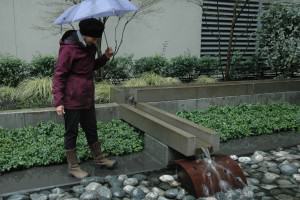
We know the sound of water in cities is soothing and therapeutic as well, and a major additional reason to support efforts at river restoration, and stream day-lighting in urban neighborhoods. On a recent visit to Oslo, I recorded the fast moving water of several streams, including the Akerselva, a beautifully restored waterway that runs through much of that city. With hiking and biking paths, and numerous small bridges that allow crossing the river at key points, it is both a mobility asset and a green urban spine, and one that provides numerous points for sitting, picnicking, and rolling in the grass, all within earshot of the sounds of moving water.
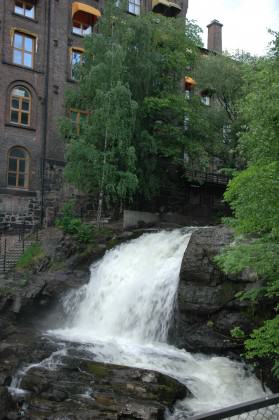
Click here for sounds of the Akerselva River in Oslo.
One of the modern challenges of healthy sustainable living in the USA is overcoming the predominately indoor-oriented lives that most Americans experience. Green neighborhood designs can help to correct this. For instance, tree planting and creative green elements can, through shading and evapo-transpiration, effectively replace ubiquitous air conditioning and help to reacquaint Americans with open windows and doors, and the ability to overcome the physical barriers to hearing place sounds. Village Homes, in Davis, California, is an inspired and early green neighborhood with this goal. Extensive green landscaping, and passive solar designed homes, have created the conditions for closer contact with the outside world. As Judy and Michael Corbett discuss in their terrific book about the neighborhood:
“Elimination of the need for air conditioners by means of our natural cooling system creates a quiet neighborhood and allows us to be more in touch with the natural breezes and smells of summer” (Corbett and Corbett, 1999).
Some new home designs, furthermore, are creatively incorporating listening elements that collect and project outdoor sounds into indoor living spaces. Architects Joel Sanders and Karen Van Lengen have recently designed a prototype of a suburban house of the future, the MIX house, that creatively collects sounds and images from the sky and surroundings and projects them into the spaces of the house. They envision use of a series of “audiovisual” or “sonic” windows that when closed (imagine winter weather?) collect both sound and images, as well as a large tilted ceiling that collects the images and sounds from the sky into the master bedroom. These ideas are unique for home design and architecture which, as the designers note, has tended to reflect an “ocular-centric design culture.”
And perhaps larger buildings can be designed to facilitate aural experiences that connect us to nature and place. There is the example that comes to mind of the apartment complex that fellow The Nature of Cities collective writer Mike Houck took me to in Portland, Oregon, where the rainwater is collected and steered to a series of courtyard water features. Here, at 10th@Hoyt, residents reportedly come out on stormy days to listen to the rain, as it falls and makes its way down and through an elaborate system of “runnels and chutes” (Echols and Pennypacker, 2006).
Natural soundscapes as an important dimension of city planning
For those of us involved in city planning, we must find ways to integrate sound into our work—community comprehensive plans should have a sound element or chapter, and our vision statements for the future should reflect the important goals we have for our community sound environments. Perhaps we begin to formulate and express our parks and greenspaces targets to reflect a sound dimension—e.g. the goal that every neighborhood in a city reach conditions in which on any given day residents can easily hear (let’s say) 10 bird species. Many cities, such as New York, have established a goal of minimum access to parks—say every resident able to reach a park or greenspace within 5-10 minute walk. Perhaps such targets could be expanded to include not just a park, but a quiet space (within the park perhaps?) where it is possible to hear crickets?
I can also imagine instituting some form of natural soundscape performance standard for new buildings and development: requirements, for instance, that new developments prepare aural impact statements that make an honest attempt to judge likely soundscape impacts, and to mitigate them in some clear ways (e.g. new trees and vegetative elements that might help to compensate for a development’s reduction in natural sounds and increase in mechanical and human sounds).
We need to better study and take account of sounds in the planning and design work that we do. Every city might start then by preparing a sound map, a kind of inventory or aural assets. Each community, each place has its own soundscape, its own unique sound signature. Understanding this signature soundscape, and monitoring how it changes over time, should become a common planning practice.
In my own community we have begun to develop, over several years, and with the help of my students, a community sound map, as an initial effort to take stock of the many sounds that we take for granted. Every community needs a sound map, perhaps even a sound plan. With the help of my students we have been recording snippets of sound throughout the city. Understanding the unique and special sounds one would hear on different (sound) walks, we are beginning to understand the physical spaces around us are filled not with noise but with beauty and meaning and connection (though there is some noise to be sure; see here). In the process we are collectively learning to listen again—to hear things that we may have not been aware of, to savor the aural flavors and nuances and to celebrate the connections to other life that really, truly listening can afford.
Of course not all sounds are pleasant to the ear. Many are mildly annoying (dogs barking at night), seriously stressful (airport approach and departure sounds), and some are alarming (e.g. police and fire vehicles). Like other aspects of our lives, perhaps we should not aspire to a world of only pleasant sounds, but recognize that a life fully lived in a community is one of many and diverse experiences, some pleasant, some not so, and some sounds that are recuperative, others that are disturbing, but all make up the soundscapes of our lives.
Just as landscapes change in a community and region over time, so also does our experience of sound and in fact recording and acknowledging what we hear is a kind of proxy for those changes. We are understandably concerned when we lose certain lands and habitats in and around communities, but for me part of what that is unfortunate is that we often also lose the special sounds that those spaces provide. Sounds and soundscapes then offer another window or measure or marker for understanding the change in our communities. Not all of these changes to the community soundscape are negative, of course, but many are. And it is rarely the case that there is much explicit discussion (or any) of the diminished soundscape that community changes typically wreak.
Hearing the nature around us
Despite the many competing sounds and noises in cities there is much to hear if we try. Too often we don’t try, and like the failure to recognize plants and animals visually (that common species of tree or bird) we don’t recognize the sounds that we do hear.
Let’s return to the natural sound presented in the beginning of this essay. Did you know what it was? At once exotic and unusual sounding, most audience guesses are wrong. Many suggest a tree frog, but most are baffled. I then show a photo and usually the audience is quite surprised to see that it is the call of the eastern screech owl. It is seemingly an exotic sound, a twittering and a horse-like downward whinny.
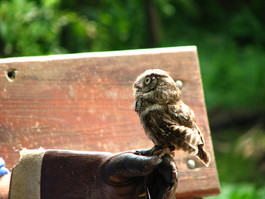
It is a common co-inhabitant of urban and suburban environments. I must admit that what initially led me to this unique sound was hearing it my backyard one evening. It is a sound that once heard is not easily forgotten, and indeed a very common sound in suburban neighborhoods throughout the eastern U.S. Yet it goes unrecognized and we miss the opportunity to acknowledge and enjoy the life around us, in this case the special night sounds that make leaving the windows open in the evening so enjoyable. Knowing that sound (it turns out that screech owls don’t actually screech!) moreover, deepens both my understanding of but commitment to that place in which I live, and I have found myself on many nights longing to hear the screech owl again, as a kind of returning friend, an important and valued member of community and neighborhood.
The sound signature of each community will be unique and different, of course, and is at least a part of what makes a place special and distinctive. Many of these sounds are human-made (and not all them noise), and it is the unique blend of sounds that makes a unique signature. On a visit several years ago to Iowa City, Iowa, home to the University of Iowa, I discovered some interesting ways in which that city’s and region’s soundscape is distinctive or different. The university’s power plant, for instance, has historically blown a whistle to mark time, four times a day: 8am, 12noon, 1pm and 5pm. It’s a distinctive whistle to be sure; it got my attention when first I heard it. And several years ago they stopped the practice briefly, with the understanding that the time-marking function of the whistle was no longer needed. But there was a community backlash from the decision and the whistle was restored. In this city the whistle has become a reassuring and familiar sound, a part of the city’s identity, indeed its self-identity. There are countless other sounds—from the low clattering of plates, dishes and silverware of outdoor restaurants, to the distant rumble of a train, that can blend together pleasantly.
Part of the challenge moving forward may be that we need to learn (or is it re-learn?) how to truly listen in the places we live. We will need to cultivate a curiosity about what we hear, and ask ourselves, and each other, what or who is making a particular sound. But we will also need to find the resolve to be still and quiet occasionally, to resist the buzz and bell of our cell phones, long enough to hear the wonderful voices of the life around.
Tim Beatley
Charlottesville, VA USA
What are some of your favorite urban natural sounds? Take a moment to record one of them and send it to [email protected]. We will try to post it here. MP4 or WAV format please, and no more than 60 seconds long. Include as the title an identifcation of the sound and where and the date it was recorded. Please, only sounds you have recorded yourself.
House Sparrows. Near Union Square, Manhattan, New York City. 12 January 2013. Recorded by David Maddox

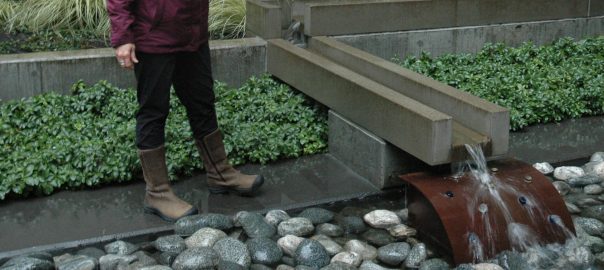






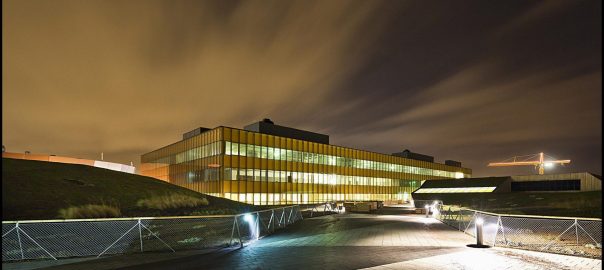

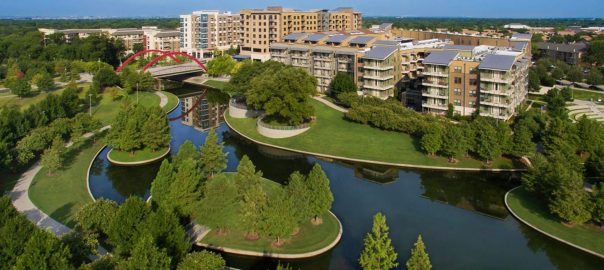
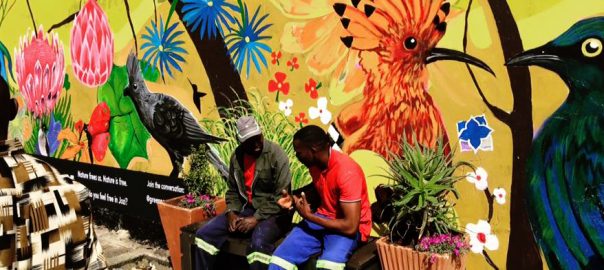
– We should pay more attention to the surroundings, not just those elements that are easy to see
Are you familiar with Unsung NYC, a comparative soundscape project of the present day city back to the 1609 landscape?
Iam studing on posetive aspect of urban soundscape . ad now Iam searching for succssesful project around the world . How can we make our city better ? or How should we pay atention ? what is the role of soundscape or phonic identify in our city ?
make me happy with your help to find new projects
Wonderful site. Plenty of helpful information here. I am sending it to
a few buddies ans additionally sharing in delicious. And obviously, thank you to your sweat!
Thanks, Tim, for your delightful and thoughtful posting on urban soundscapes, “sound signatures,” and the absolute need for urban planners and city officials — and the larger urban population — to pay more attention to the importance of natural sounds in our lives, as well as the often negative (but too often ignored) impacts of harsh and stressful noises. Thanks too for the aural links and the many resources you include; I was especially happy to learn about Elisabeth Tova Bailey’s “The Sound of a Wild Snail Eating” and have added that to my “must read” list.
Like you and, I’m sure, many others who follow this blogsite, I’ve come to recognize the importance of natural sounds — and what some call “natural quiet” — in my life. Though I love living in Alaska, one of the things I miss from my Connecticut days are the summer nighttime calls of crickets and other insects (listening to your link of Virginia nighttime sounds was a pleasure). And two middle-aged occurrences that both expanded my awareness and added to my delight involved my “discovery” of songbirds and their songs (where had they been all those years — or, better put, why hadn’t I noticed them before?); and learning that Anchorage is home to wood frogs, whose calls I now listen for each April and May, a sure sign that spring has finally arrived in my adopted hometown.
Again, a great posting.
This is a good piece of writing and I enjoyed the story as well. Every day when I wake up I hear the sounds of birds – sometimes squirrels and there was a woodpecker a while back. For me it reminds me of my childhood – before anything bad happened- when the world was good and I was connected to the whole earth and everything. It brings me calming energy to start the day with. As time goes by I start to hear the cars on Rosa Parks Way but first it is always the birds.
My life has been through so many twists and turns and the most sane, peaceful place there is for me is in Nature- next to a body of water. I need to know that I am a part of something beautiful and healthy because the world I work in rarely feels that way. I didn’t grow up believing that it was because I’m Native American, because my white mom and Indian –Mexican dad always shared their love for camping, fishing and respect and love for the outdoors throughout my childhood.
It is an incredible feeling to experience that you are one with the world, that you are no more important than any other flora or fauna or creation but that you are a part of it. And it is because of the abilities we have as human beings to be stewards that it too, is a part of who we are.
Tim, your piece really hit a chord here in Portland, Oregon. I was pleasantly surprised to receive your post from David Maddox literally within minutes of hearing two Great Horned Owls outside my friend’s house in Sonoma, CA en route back from an extended trip to Baja, CA. I loved the fact that you included a recording of the Screech Owl, which I played just moments after going outside to hoot the two apparently courting Great Horned Owls.
I wanted you to know that I got a wonderful response from one of my great friends in Portland, William Hawkins III, who is a longstanding park advocate. His great uncle Lester Leander Hawkins escorted John Charles Olmsted around Portland during his 1903 visit at the behest of the Portland Park Board. Subsequently, Olmsted prepared the 1903 master plan for Portland’s park system, which continues to inspire our work on parks, trails, and natural areas to this day.
Bill Hawkins wrote, “Mike, There is empathy with Mr. Beatley’s hopes and dreams. Where we live we aspire to similar ideals. Accordingly, we have multiple bird feeders, with subsequent pleasantries. The noise of the squirrels attacking them, however, constantly tells us nature is at hand. Owl hootings are a highpoint. The bliss is somewhat interrupted by helicopters overhead, as their main fly-way seems to be close by. The blade noise overwhelms the never-ending “noise perfume” of the HVAC equipment at the hospital across the Marquam Canyon from us, but this is only a problem in the summer when the bedroom door is open. Otherwise, we seem in the woods, despite being a short distance from the center of the city. One must screen out weekends which have the usual blower noise here and there. Reassuring is that all the leaves are recycled. But the best of the audio world is the howling of the coyotes at night, presumedly after they have been well fed by recycling the neighborhood cats. It is not ideal, but I suppose in the grand scheme of things, Darwinian adaption is the rule.
Peace to all.
Best, Bill
I thought you’d enjoy Bill’s missive. I received numerous other responses to the list I forwarded the blog to. Great Work.
As a member of the Portland Planning and Sustainability Commission, I’ve also sent your piece to the mayor, my colleagues on the Commission, and Portland’s Bureau of Planning and Sustainability requesting that we integrate noise pollution and its obverse, access to sounds of nature, into our ongoing Comprehensive Plan process. Thanks for the inspiration to take that issue on.
Mike Houck, Director
Urban Greenspaces Institute